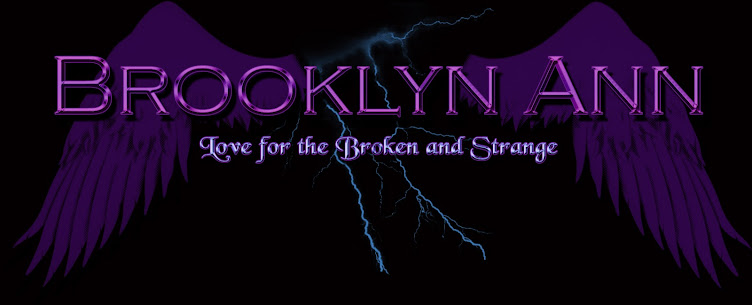Thank you, Brooklyn Ann, for inviting me to Supernatural Smut!
I’m excited to be here and talk about one of my favorite things: subplots. I like to construct stories with a lot of subplots mainly because I like to write in multiple POVs (point-of-views). Like in Ruined, I wrote from the perspective of not just the hero and heroine, but also the villain, the mentor, the seductress and the Book Two hero. Since this was my first novel, I learned a lot about subplots during the editing process. The number one thing I learned is that the subplots must relate to the overall story.
The reason why subplots are tricky is because it’s hard to find a good balance. I personally like when a lot is going on in a novel as long as I can follow along. But my favorite scenes in books are always going to be between the hero and heroine. I love the scenes where the hero and heroine fight, where they make up, where they have those soft moments right before something throws them for a loop. So while I like a lot going on in the story, I always want the focus to be on the couple. This is a little different for fantasy compared to paranormal romance. I think you might find more context and characters beyond the world of the hero and heroine in fantasy novels. But since I’m a fan of both, I try to trend more toward the paranormal romance philosophy where everything should relate back to the couple.
Since Ruined is my debut, I’m still learning how to juggle subplots. I think each book I write makes it easier to discern which storylines belong and which should be taken out. I’m especially excited about Book Two in the Ruined trilogy because I love how one of the side stories ends up impacting the major plot.
I automatically associate subplots with POVs. If I reveal a character in a story, that character should have a compelling reason for being there. I constantly have to remind myself of this. It’s also good to understand the goal, motivation and conflict for the characters involved in subplots, whether or not you show their view point.
Questions I learned to ask during the editing process:
Why is this subplot included?
How does this storyline relate to the overarching theme?
What makes this character view point important to the story?
What would be different about this story if this character and their experiences weren’t in it?
If I took this subplot out, will the main story be impacted? (On this one, if the answer is no, it can be taken out.)
Here are a few Pros and Cons of Subplots:
PROs of Subplots
Incorporating storylines for minor characters can encourage an author to make the smaller characters more interesting. It gives an opportunity for the author to ask, what makes this character tick? What does this character want from this story? It can take a villain who we may see as “bad” and give him motivation so we can understand why he’s bad.
Multiple storylines can help in series. Sometimes including storylines for smaller characters can leave the reader wondering . . . whatever happened to (insert name). . . which means they want to know more about the world you built in Book One.
CONs of Subplots
They can be confusing for readers to follow. If there’s too many things going on, readers may find themselves asking why they should care. This also depends on the reader. Some readers have zero tolerance for subplots. Some really like them.
Readers may wonder about the relation between the minor side stories and the main love story. If they can’t figure it out, they may skip past the sections that don’t involve the hero and heroine.
This is what I’ve learned so far. I think this is a constantly changing thing and heavily depends on the individual story. Fantasy usually involves more subplots. I recently finished a futuristic novella where I just show the hero and heroine, which was very challenging for me. I think it’s a good exercise to step out of our comfort zones and do the things that make us nervous.
Subplots can pull readers into the fictional world or they can distract readers. As long as we’re consciously analyzing which subplot is moving the story forward and which are holding it back, I think we’re on the right track.
What’s your reader preference? Lots of subplots, the fewer the better or somewhere in-between?
Thank you so much, Brooklyn Ann! I enjoyed hanging out today.
BIO
Kinley Baker read her first romance novel at the age of thirteen and immediately fell in love with the hero and the genre. She is the author of the fantasy romance, Ruined, recently released from Crescent Moon Press. As a firm supporter of all supernatural lifestyles, she writes fantasy romance, paranormal romance, and urban fantasy. She lives with her husband and her dog, Joker, in the Pacific Northwest. You can find Kinley at www.kinleybaker.com.


Thanks so much for coming today, Kinley! I LOVED RUINED! I hope to see Kon & Arianna's story...and I want more of the Varner. Mmmmm...mmmm!!!
ReplyDeleteThanks, Brooklyn Ann! So glad you loved Ruined and thanks for having me on your blog :-)
ReplyDelete